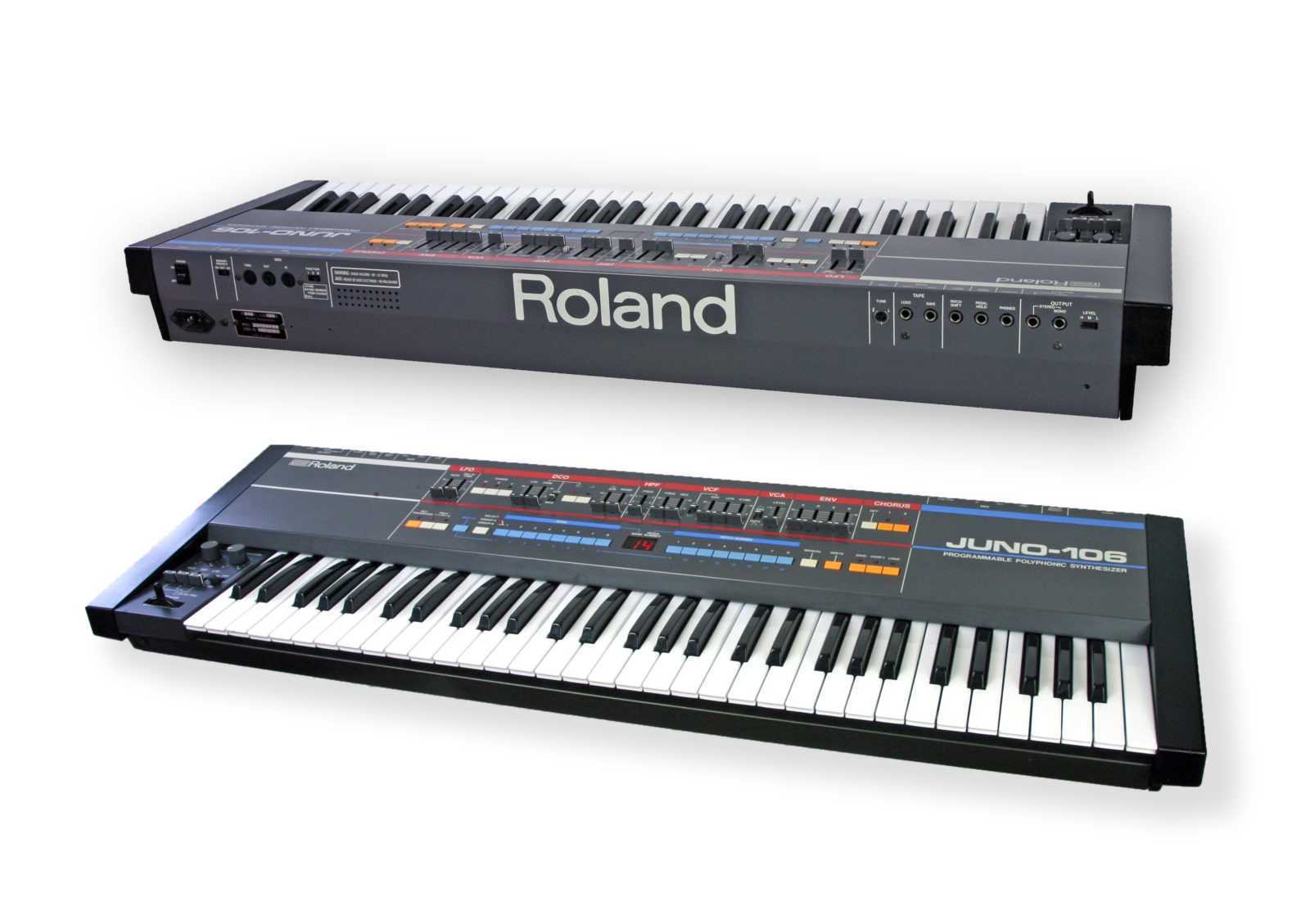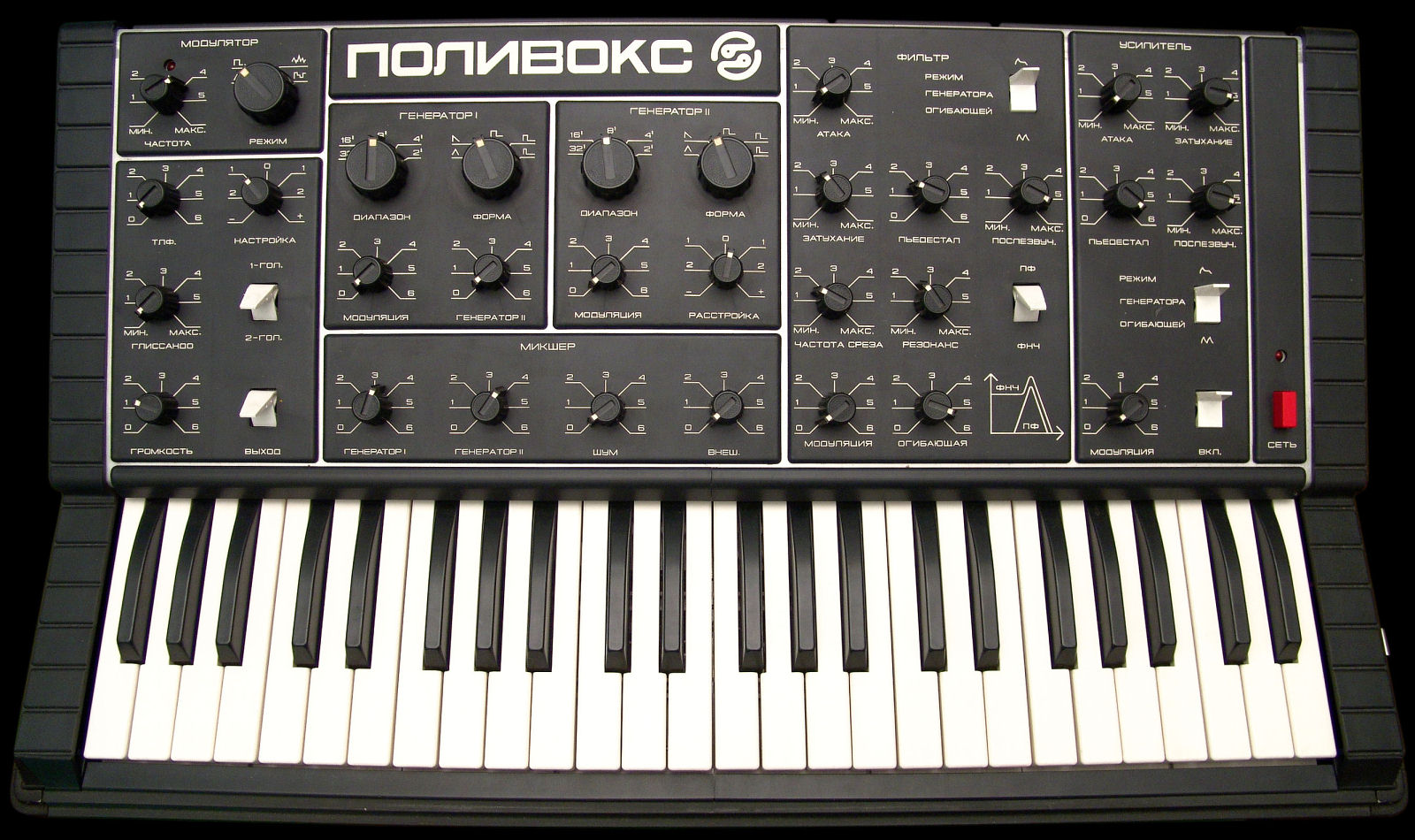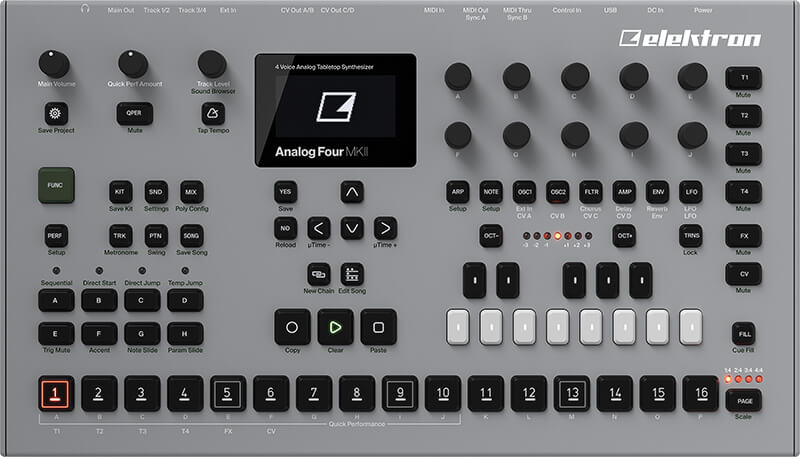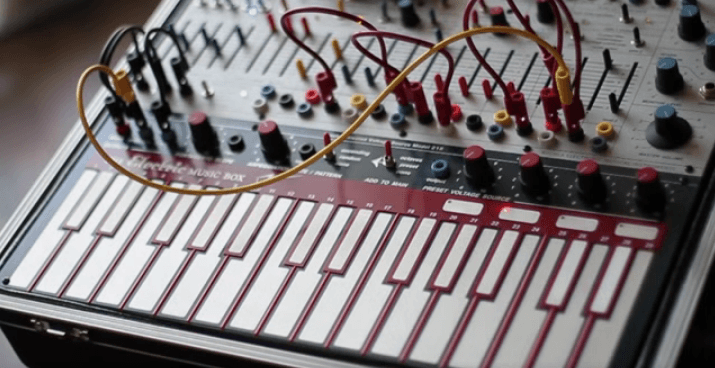
The Roland Juno-106 is relatively simple in terms of its synthesis architecture. Nevertheless, the Juno-106 is still quite popular among musicians and producers due to the fast sound creation workflow of the hands-on interface and its ability to produce rich basses, pads, PWM (Pulse Width Modulation) sounds and other distinct and desirable analog tones.
The central tone-generating component of the instrument is a set of 6 digitally controlled oscillators capable of producing sawtooth and square/pulse waveforms. The Juno is well known for its -24 dB/octave analog lowpass filter with adjustable resonance, which has been said to provide the Juno 106 with its distinctive rich sound, when combined with the tone of the MC5534 wave generation modules.
The instrument’s VCA can be switched between simple note gating or envelope-controlled loudness with a switch. The same envelope can also modulate the filter’s cutoff frequency, in normal or inverted polarity. The filter cutoff can also track the keyboard to allow high harmonics to be heard on higher-pitched notes.
Other features
The Juno-106 features an onboard analog stereo chorus effect, which is a fairly distinctive aspect of the instrument’s sound. The Juno-106’s chorus is based on a set of bucket brigade delay (BBD) lines similar to other Roland products of the time including guitar pedals. The Juno-106 also contains 128 internal memory slots for patch storage as well as surprisingly complete MIDI implementation – a rarity for any synthesizers of the time, let alone analogue ones. Compared to the 60 and 6 juno models the editing controls (sliders and buttons) on the synthesizer are capable of transmitting and receiving MIDI SysEx commands, allowing complete control and more advanced MIDI based modulation of the instrument via a sequencer or computer.
Furthermore, this synthesizer features polyphonic portamento, also rather rare for a 1984 analog instrument (Kawai SX-210 -1982- and SX-240 -1983- had already portamento).
History
The Juno-106 was the third in the Juno series of analog synthesizers. Its predecessors, the Roland Juno-6 and Roland Juno-60, were somewhat different in appearance than their later sibling, but shared most of the internal components and features in common with the exception of a tradeoff between a simple up/down arpeggiator on the earlier models and a portamento feature on the Juno-106. The Juno-106 also featured MIDI connectivity, rather than the proprietary Roland Digital Control Bus (DCB) found on the Juno-60, along with much higher patch storage (128 spaces vs 54 on the Juno 60 and none on the Juno 6).
Roland also produced a Juno-106 variant with built-in speakers and a slightly redesigned enclosure, intended for the consumer market rather than professional users. In Japan, this version was called the “Juno-106S”, and elsewhere in the world it was called the HS-60.
The Juno-106 is a unique synthesizer in a large part because it came at a time period when digital synthesizer components were just being introduced, MIDI being the most important, yet it featured the best of the analogue and digital worlds. The Juno-106 was one of the last vintage synthesizers to feature all of its controls as buttons and sliders on the faceplate which allowed for quick programming. The Juno-106 also featured DCOs with an analog signal path including VCFs. This allowed for perfectly tuned pitch with the warmth of analogue waveshaping and filters, along with the drive provided by the VCA. It is because of this balance of analogue and digital that there really is no other synth quite like the Juno-106 and it is still a staple in many studios today.



